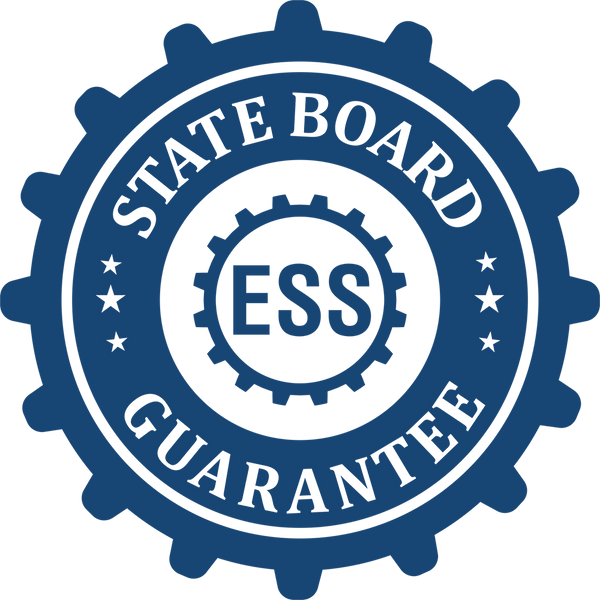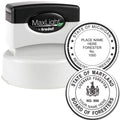Have you ever stopped to think about how a rejected inspection stamp might be the quiet hero of your quality control process? It’s easy to overlook the value of a well-placed “Rejected” label. After all, who wants to highlight flaws in their merchandise or products? But the truth is, when you stamp items that don’t meet your standards, you’re saving yourself a fortune in returns, replacements, and reputation repair. This simple step can prevent subpar items from sneaking through to the next stage, and it alerts your team to problems before they spiral out of control. Ultimately, by rejecting a defect sooner, you protect your bottom line and maintain a high level of trust with your customers.
In this article, we’ll walk through why using a rejected inspection stamp is such a game-changer for your business. You’ll also discover how it ties into a larger quality system and helps drive continuous improvement. And if you’re looking for a top-notch supplier with decades of experience, you’ll learn more about how ESS, a family-owned business since 1964, can help you get the perfect custom stamp. Let’s dive in and see how a rejected item can be the first step on your path to premium products and happier customers.
Recognize The Impact Of Rejection
Why Marking “Rejected” Helps
You might wonder if stamping an item “Rejected” just adds extra labeling. But it actually serves a crucial purpose. When your team sees that red or bold stamp on a product, they immediately know something is off. This eliminates guesswork and speeds decision-making. Instead of wasting time debating whether an item is acceptable, your employees can quickly segregate it from acceptable goods and prevent it from moving further along the supply chain.
By stamping “Rejected,” you also create a moment of clarity for everyone in the pipeline. Think of it like a neon sign guiding your team to investigate problems, correct them, and prevent them from recurring. A single “Rejected” label could reveal a machine calibration mistake or a missing component. When addressed quickly, these issues won’t lead to bigger headaches.
Facing The Myths
There’s a myth that using a rejected inspection stamp is somehow negative or harsh. Some businesses avoid the word “Rejected” because they fear it looks bad to visitors, new hires, or partners. In reality, it shows strong commitment to quality. By being open about what doesn’t pass muster, you prove that customer satisfaction matters. And if you decide to refine your stamp design to something like “Needs Review,” remember that clarity should always trump sugarcoating. You want your team to take immediate notice, not guess whether “Needs Review” is as urgent as “Rejected.”
Avoid Expensive Errors
Catching Problems Early
Think about the simplest mistakes you could find in your process. Maybe a label is printed backward, or a bolt is missing from a piece of machinery. If these errors are left unnoticed, the entire batch or assembly line could become compromised. That means rework, wasted materials, and unhappy customers. The cost adds up—fast.
When you use a rejected inspection stamp to mark the earliest signs of trouble, you drastically reduce the chance of sending a flawed product out the door. In many industries, a single defective unit in the wild can cause a chain reaction of warranty claims, brand damage, or even legal issues. Marking a product as “Rejected” the moment it fails inspection ensures your team can retrieve, segregate, and re-inspect items before they cause bigger losses. Over time, this practice becomes second nature, and your costs for rework or complaints start to drop.
Safeguarding Brand Image
A business can spend years building a name that customers trust. All it takes is one bad batch to hurt that reputation. When a buyer receives a product that’s clearly not up to standard, they might not only return it, but also share their frustration with others, potentially on social media or review sites.
By stamping and setting aside unfit products, you shield your brand name from avoidable harm. Customers and stakeholders who visit your facility might see “Rejected” stamps in use and realize you’re thorough about quality. Rather than perceiving it as negative, they’ll recognize your commitment to delivering only your best. A rejection mark, in this sense, is a promise that defective items won’t be tolerated.
Streamline Your Quality Control
Setting Up A Smooth Workflow
Using a rejected inspection stamp allows you to refine the flow of goods through your facility. Imagine a designated area for “Rejected” items, where staff immediately know to double-check them. This kind of organization makes your quality control system more efficient. You’re ensuring that each product is carefully examined, funneled to a proper location, and given the attention it needs without mixing it up with your finished goods.
Additionally, if you’re overseeing multiple production lines, a uniform rejection system helps you compare issues across departments. If you notice that one line generates more “Rejected” items, you can investigate why. Is it a team training gap, a piece of equipment that’s off calibration, or an issue with raw materials? By gathering this data, you can tackle the root causes swiftly.
Keeping Documentation Clear
When it comes to recordkeeping, clarity is everything. Labeling subpar products makes it simpler to fill out defect reports or track problems back to a specific date, shift, or order number. If your business is regularly audited, you’ll have an easy path to demonstrate how you handle item rejections and re-inspections.
It also helps you maintain clear communication with suppliers. If you suspect materials arriving from a particular vendor are consistently flawed, you can share actual data on how many items you had to stamp “Rejected.” This evidence-based approach can help you negotiate better terms or collaborate with vendors on improving their outputs. Either way, a visible “Rejected” mark is the first step to organized, transparent documentation.
Partner With ESS For Stamps
Family-Owned Reliability
When you’re selecting a supplier for your custom inspection tools, it’s nice to know they have a long-standing commitment to customers—just like you do. That’s where ESS comes in. We’re family owned and operated since 1964, and we’ve spent decades perfecting the craft of making inspection stamps, QA stamps, QC stamps, and more. This isn’t a side hobby or a passing trend for us, it’s our passion.
You’ll feel that difference when you work with us. From the moment you share your needs, our team steps in to guide you toward the best product. We understand that no two businesses have identical requirements, which is why we take the time to learn about your process and your specific pain points.
Quick Turnaround And Tailored Solutions
We also know that time is money. Maybe you’ve just realized you need a new set of “Rejected” or “Approved” stamps as soon as possible—possibly due to a big order or a new set of standards you must meet. ESS prides itself on excellent customer service and a very fast turnaround. We operate from a place of empathy, treating your timelines and production targets as if they were our own.
Need a specialized shape, color, or size? We’ve got you covered. Our experts talk you through the customization process, from choosing durable materials to picking ink types that resist smudging and last through harsh factory conditions. The result is a stamp that integrates seamlessly into your workflow.
Explore Our Logo Stamps
Sometimes, you need more than just a word on your stamp. Maybe you want your brand to shine during the QA process, or you want to combine your company logo with “Rejected” or “Approved” text. If that’s the direction you’re heading, consider our company logo inspection stamp. We can help you place your distinct design on the stamp, so your documentation stands out and you reinforce brand recognition at every step.
By personalizing your stamps, you’re making it crystal clear that your company owns its processes. When someone sees your branded “Rejected” mark, they know that you’ve taken a definitive stance on quality assurance. This not only speaks volumes to members of your team, but it also impresses vendors, partners, and auditors who appreciate seeing consistency and attention to detail.
Make Rejection A Positive Step
Start Small Changes
Contrary to what some folks believe, adopting a rejected inspection stamp isn’t about punishing employees or complicating your operations. It’s about building a preventive culture, one stamp at a time. Even if you start with a few test runs—like stamping items at the final inspection stage—you’ll quickly see improvements in how errors are caught and handled. As your team grows more comfortable with the concept, you can introduce earlier inspections or expand your stamping practice to multiple checkpoints.
Don’t be surprised if people respond positively once they see the system in action. Many employees appreciate knowing exactly what’s expected from them and where a product stands in the process. Clarity boosts morale, because it reduces confusion and fosters a shared sense of accountability.
Ongoing Improvement
A properly used rejection stamp may reveal all kinds of patterns that weren’t obvious before. Over time, you might notice that a specific supplier’s parts show a higher “Rejected” rate or that rejections peak during certain shifts. This data empowers you to fine-tune training programs, equipment upkeep, or supplier relations. Each time you fix an underlying issue, you reduce your rejection rate and strengthen your brand’s reputation. In essence, the stamp acts as a teacher—guiding you to the spots that need extra attention.
You also create a feedback loop for continuous improvement. As you refine your processes, you’ll likely see the need to adjust your stamps. Maybe you add a line for a date or an initial field so you know who performed the rejection. Or you figure out that certain items require color-coded stamps for faster recognition. In any case, that single stamped word becomes a catalyst for growth.
Frequently Asked Questions
What Exactly Is A Rejected Inspection Stamp?
A rejected inspection stamp is a marking tool that labels products as “Rejected” during a quality check. By quickly identifying items that don’t meet specific criteria, you isolate issues and figure out how to fix them or remove them from production.Why Would I Need One If My Team Already Uses A Checklist?
While checklists are helpful, a visual stamp speeds up communication. When someone sees “Rejected,” there’s no ambiguity. It also allows you to separate flawed products immediately and reduces the risk of them sailing through to the next stage by accident.How Does This Help My Bottom Line?
Marking defective items early prevents you from investing more time, money, and materials on products that will ultimately fail to meet standards. It also protects you from reputational harm if flawed items were ever sent to customers.Is “Rejected” The Only Word I Can Use On My Stamp?
Not at all. You can opt for words like “Defective” or “Needs Review” if you prefer. Just make sure the message is loud and clear so your team knows an item requires immediate attention. Many people favor “Rejected” because there’s no second-guessing the meaning.Where Can I Buy A Quality Stamp?
ESS is here to meet your needs. We’re family owned and operated since 1964, and we specialize in custom inspection stamps, QA stamps, QC stamps, and more. We also handle quick turnaround requests and can fully customize your design, whether you need a standard “Rejected” layout or a company logo inspection stamp.
By properly labeling items that don’t make the cut, you transform rejection into a positive, proactive move. Your team has the clarity to catch mistakes early, spot patterns, and keep your brand’s promise of quality. Above all, you stay in control of your production lines and confidently deliver only the best to your customers. Why wait? Start leveraging a rejected inspection stamp today, and see just how much it can save your business in the long run.


















